Overview
Andersonville Location
Andersonville Size
Andersonville is located in the Northeast part of Chicago. It is a relatively small neighborhood with a population of approximately 6,200 people and an area of 180 acres or .28 square miles. In terms of population size and area, it fits fairly well with the Perry Neighborhood Unit ideal of a ¼ mile radius for pedestrian walkability and population size of 5,000 - 9,000 residents.
It is bordered to the North by Bryn Mawr Ave. the South by Foster Ave, the East by Wayne Ave., and the West by Ravenswood Ave.
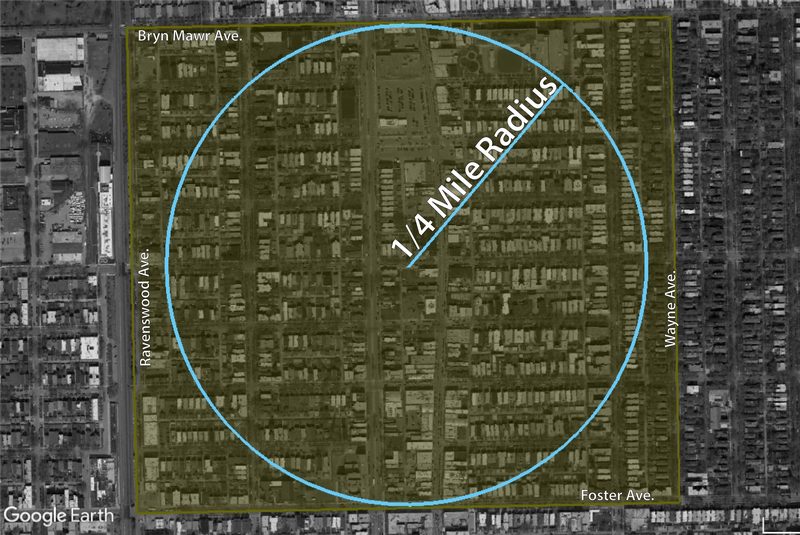
Neighborhood Identity
Neighborhood life in Andersonville is centered around the commercial strip located on Clark Street. Most of the neighborhood’s services and amenities can be found on this street lined with lampposts bearing the name of the neighborhood. The buildings are all more or less the same height and while they do not all look exactly the same there is cohesion to their styles such that the street flows nicely in the commercial center of the neighborhood.
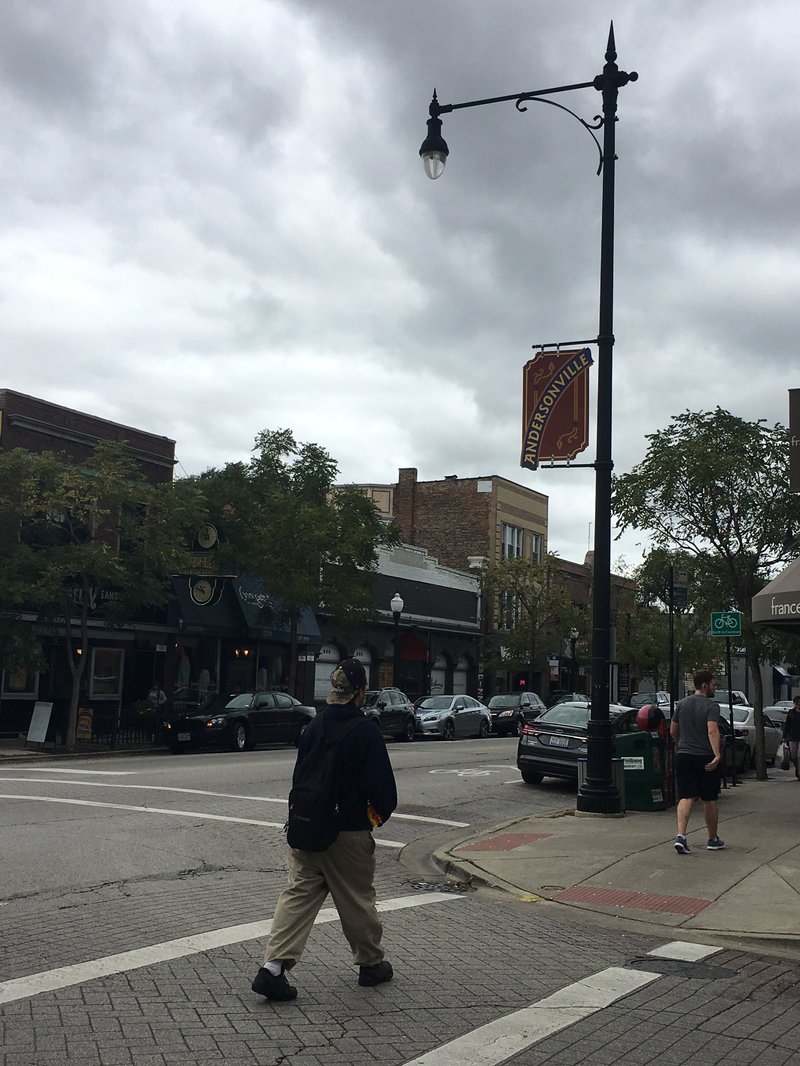
A large number of the businesses have “Andersonville” in their name and display posters and materials from the Andersonville Chamber of Commerce in their windows advertising local events and activities like the Andersonville Farmers Market, Arts Week, and Dessert Crawl. Taking in the businesses and institutions on this main drag, the neighborhood identity seems to coalesce on its past iterations as Swedish and LGBT enclaves and can be further characterized by liberal values, a focus on locally owned businesses, and promoting the arts/culture.
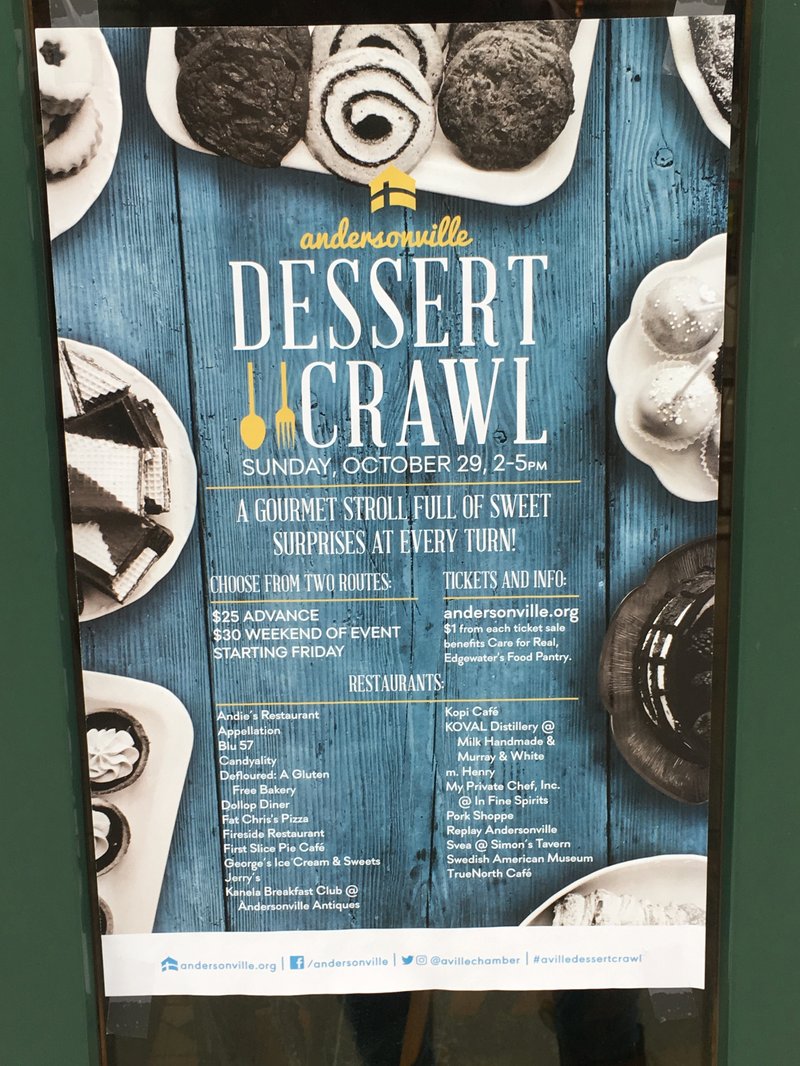
This commitment to preserving the neighborhood’s Swedish identity is evidenced by the designation of a section of Clark Street as a Historic District. Most of the Historic Buildings and Businesses have some significance to the history of Swedish immigration and settlement in the area. The Swedish American Museum is also located on Clark Street and businesses, such as Simon’s Tavern, celebrate the neighborhood's Swedish roots through symbols like like the Swedish Flag.
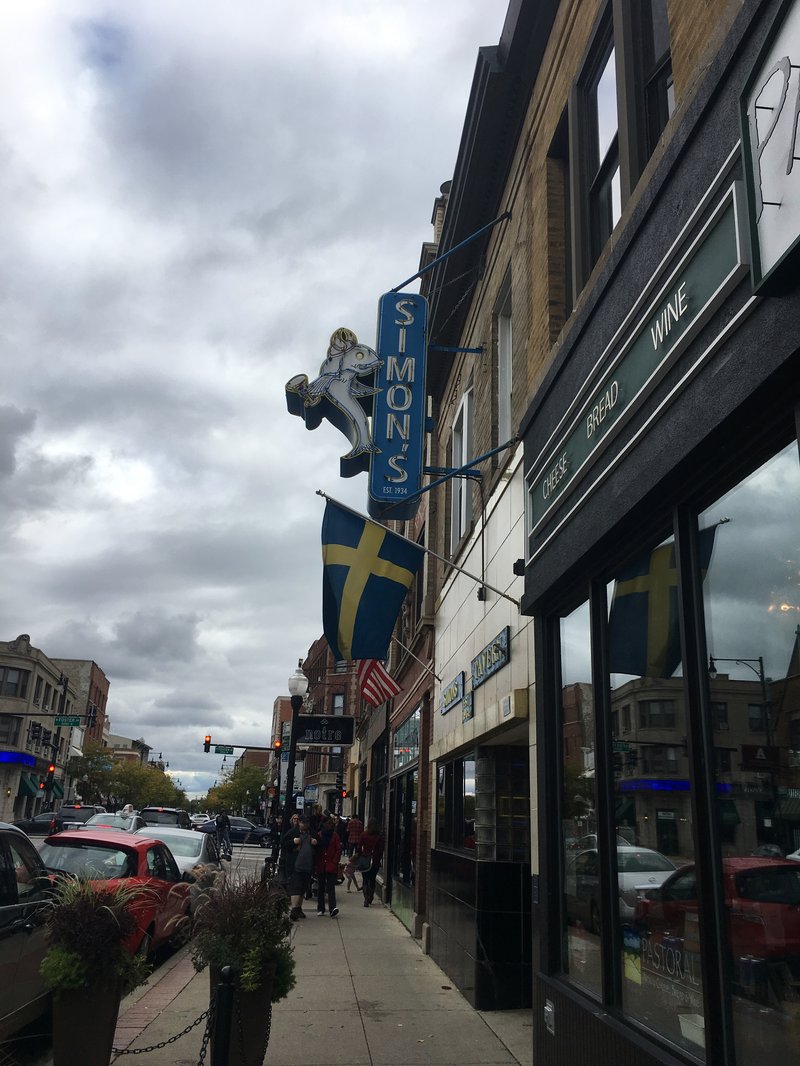
Additionally throughout the residential areas of the neighborhood, nods to Swedish architectural style can be seen both in older restored single-family homes and many newer apartments.
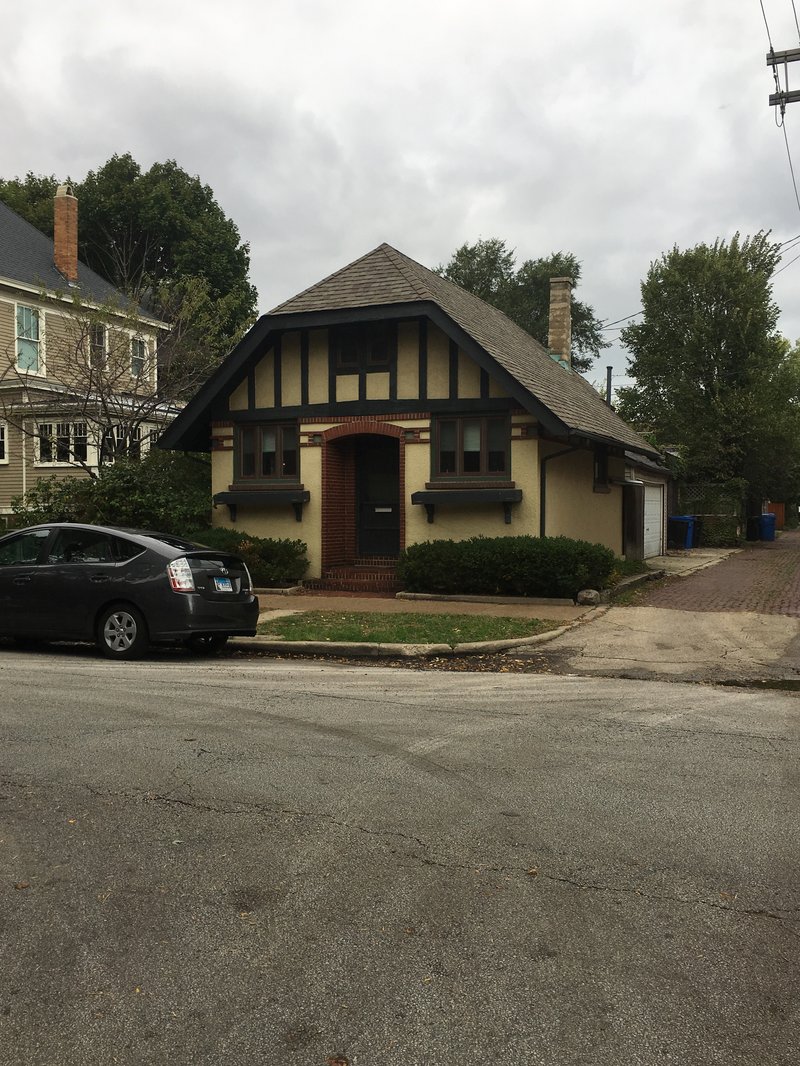
Andersonville’s history as a haven for LGBT individuals, particularly lesbians, has formed a lasting part of the community’s identity. Many of the shops, including the iconic Women and Children First Bookstore, are either aimed at the LGBT community or show support through rainbow stickers in their windows or selling buttons at the register or something of that sort. Also displayed in many windows are signs or stickers advertising the business as locally owned showing a strong sense of pride in the neighborhood’s individuality and spirit
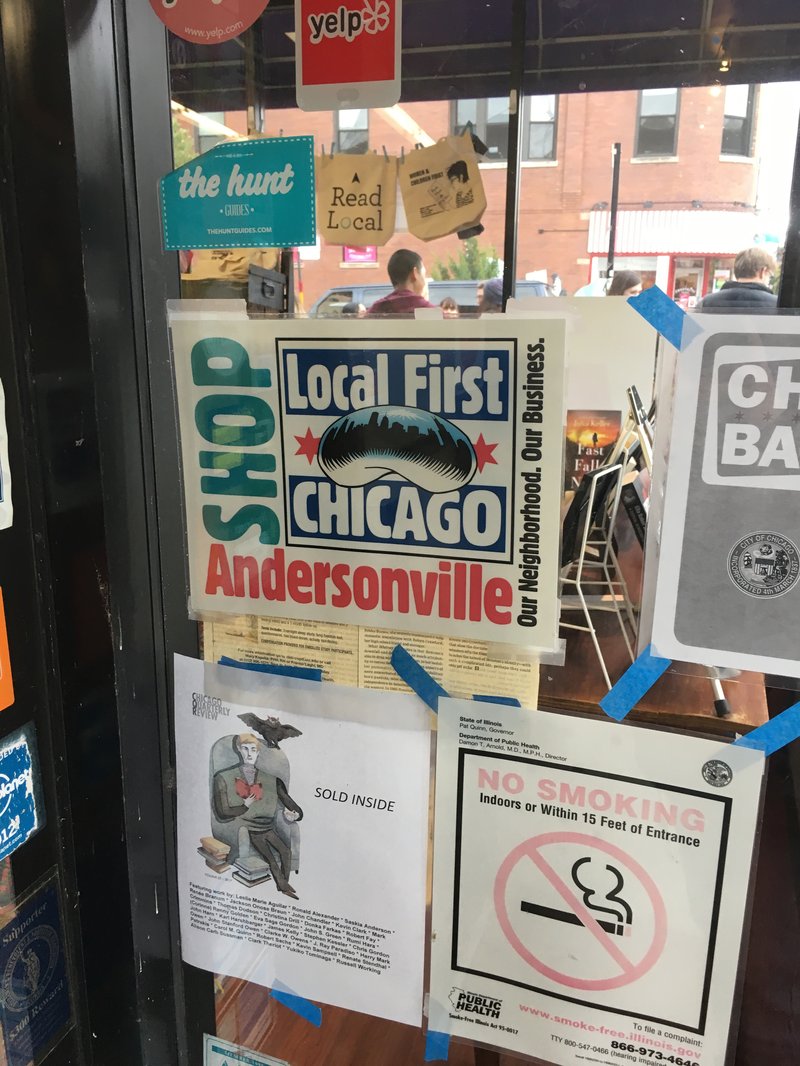
Throughout the neighborhood there are multiple venues centered on the arts and the Chamber of Commerce holds an Arts Week in which many businesses participate. Liberal values beyond simply being LGBT friendly were overtly touted by many of the businesses through window displays and selling buttons or stickers in support of movements like Black Lives Matter, as well as signage promoting neighborhood eco sustainability programs. While Andersonville is no longer ethnically homogenous, it seems to be fairly ideologically homogenous, at least as far as can be seen from the street.

Layers
For the purposes of this project I will be defining Andersonville's Neighborhood Boundaries at Bryn Mawr Ave., Wayne Ave., Lawrence Ave., and Ravenswood Ave. as outlined by the darker purple square in the map below. However, neighborhood boundaries are not as set in stone and undisputed as this delineation would imply.
For example, the Andersonville Chamber of Commerce, which has an economic interest in claiming more territory for the neighborhood extends the boundaries further to the North, South and East more than doubling the area of the neighborhood.
Local Neighborhood Associations, on the other hand, line up better with the narrower definition of Andersonville's boundaries. Although, there is a small Andersonville South Neighborhood Association that falls outside the smaller boundaries.
Although, like many cities, Chicago is branded as a "city of neighborhoods," administrative boundaries don't always match up with neighborhood boundaries. For example, Andersonville is represented, depending on where you draw the neighborhood boundaries, by 2 - 4 Aldermanic Districts. This can make it difficult to sustain a neighborhood identity and accomplish neighborhood goals through local government.
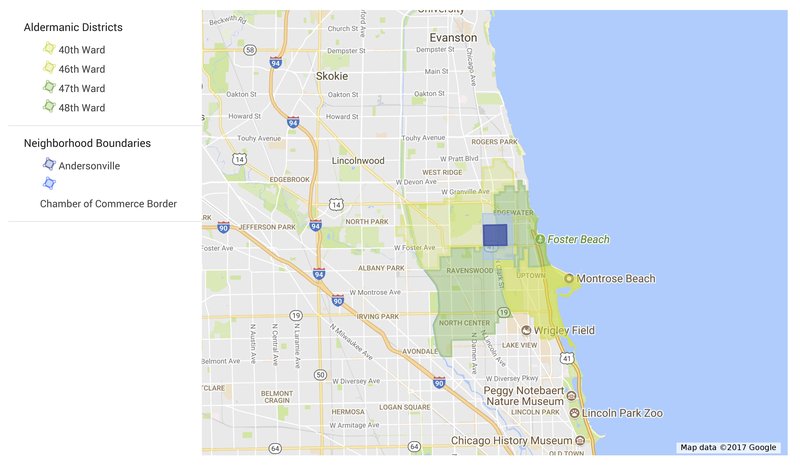
Character Diagram
Below is a diagram outlining the basic character of Andersonville. The neighborhood is largely residential with Clark Street serving as the neighborhood center, both geographically and in terms of commercial and cultural institutions.
History
Andersonville was firs settled in the 1850s by Swedish Farmers moving into the area north of Chicago. However, settlement of the area did not begin in earnest until after the Great Chicago Fire in 1871. After the fire, wooden houses were banned in the city proper and Swedish immigrants who could not afford the more expensive and less flammable building materials like stone or brick, moved out the city limits, many to the Andersonville area. New Swedish immigrants continued to move to the area for several decades. The neighborhood continued to grow and thrive until the Great Depression and post-war periods when many groups including the Swedes in Andersonville began to leave the city for the suburbs.
It was at this point that business owners in the area, concerned about the commercial situation, renewed their commitment to the Swedish heritage of the neighborhood. In 1965 the first Midsommarfest was celebrated in Andersonville as part of the Swedish tradition of marking the Summer Solstice. The festival continues to be celebrated in the neighborhood today. Additionally in 1976 the Swedish American Museum was founded as part of the grassroots effort to preserve the history of Swedish Immigrants and their contributions to Chicago.
While the neighborhood
is much more ethnically and culturally diverse today, it remains one of the
largest concentrated areas of Swedish culture in America.
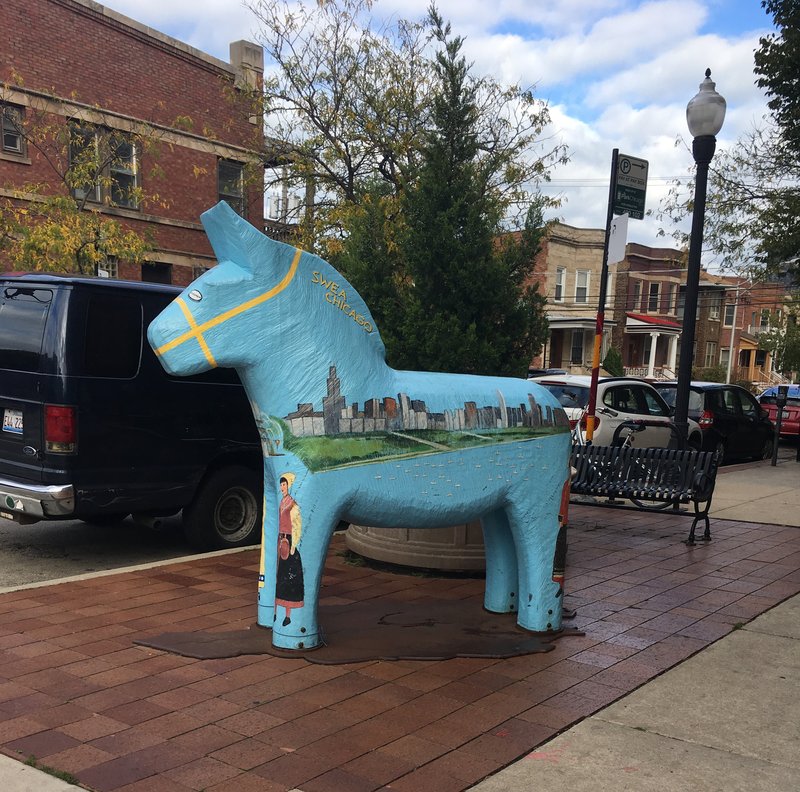
Andersonville saw a period of revival beginning in the 80s and 90s as new groups, particularly LGBT people, began to move to the area. Lesbians and other LGBT individuals were drawn to the neighborhood by the relocation of the Women and Children First Bookstore to Clark Street, which served as magnet for like-minded individuals. Like the store that drew them to the neighborhood, the new residents were being priced out of Boystown and in search of an affordable neighborhood that was accepting of the LGBT community. Several other lesbian oriented businesses and bars - like Stargaze, T’s, and Tomboy - opened in the neighborhood leading the neighborhood to be informally known as “girlstown” by many in the 90s.
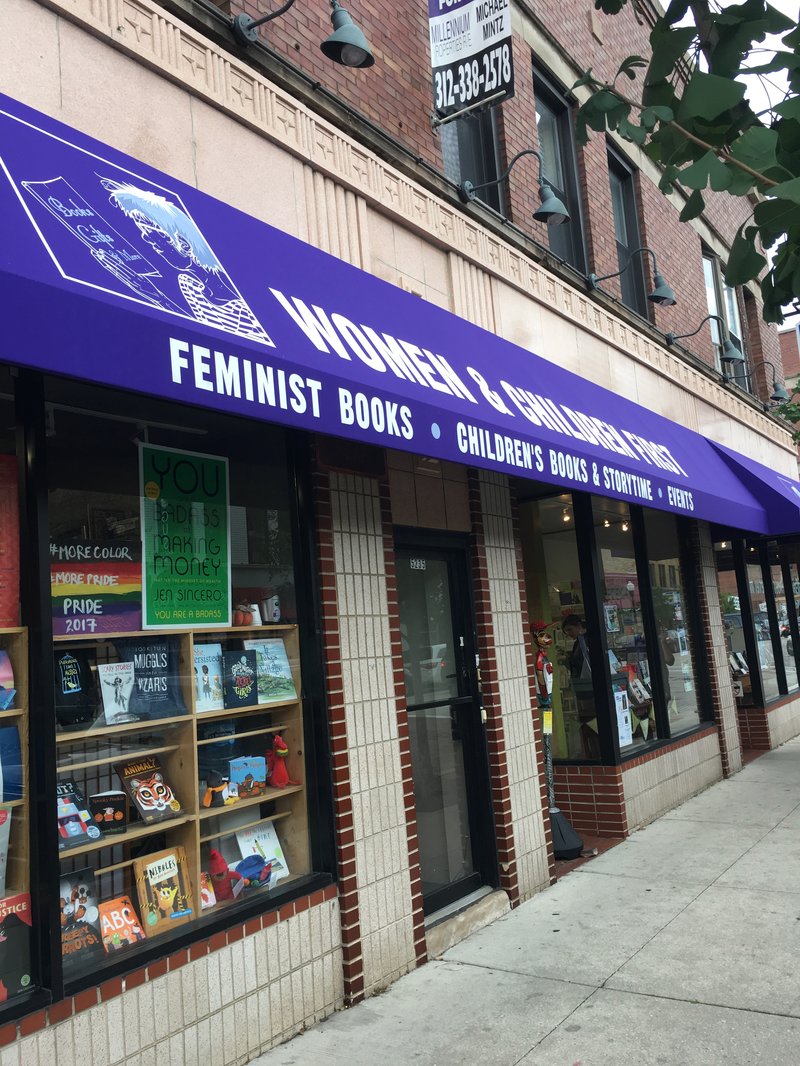
Today, while Andersonville is still one of the most popular neighborhoods for married gay and lesbian couples in Chicago, there are more married gay men living in the area than lesbians. Most of the lesbian establishments closed in the late 2000s early 2010s as the neighborhood became more trendy and expensive. So while Andersonville is no longer the Swedish enclave that it once was, or the “girlstown” counterpart to Boystown it was in the 90s, its past history as these places continues to inform the neighborhood’s identity and character today.
Sources
Geographic/Demographic
- Google Earth
- Google Maps
- Social Explorer https://www.socialexplorer.com/
- Chicago Neighborhood Map http://chicagomap.zolk.com/
History/Identity
- http://www.andersonville.org/the-neighborhood/
- https://www.dnainfo.com/chicago/20160822/andersonville/saying-goodbye-girlstown-andersonvilles-lesbian-population-shrink
- http://www.encyclopedia.chicagohistory.org/pages/1222.html
- http://www.edgewaterhistory.org/ehs/articles/v18-3-2
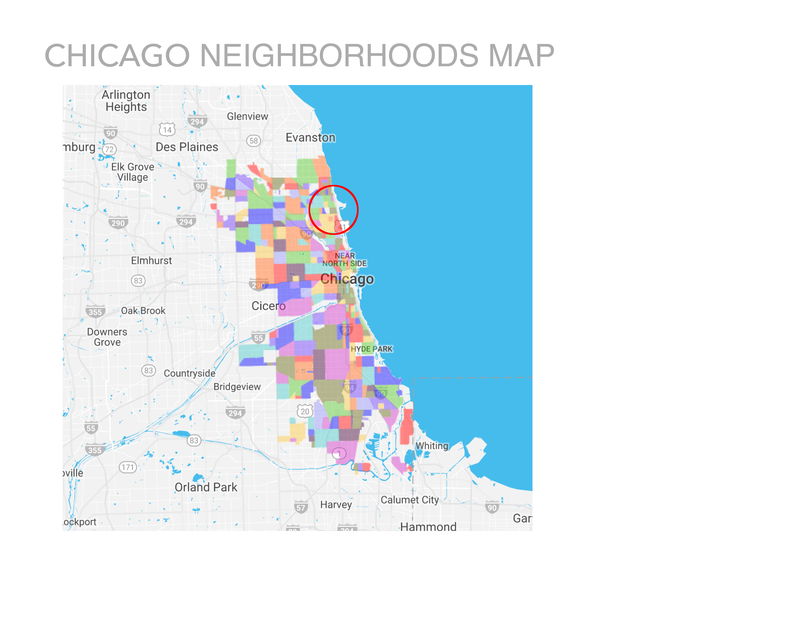
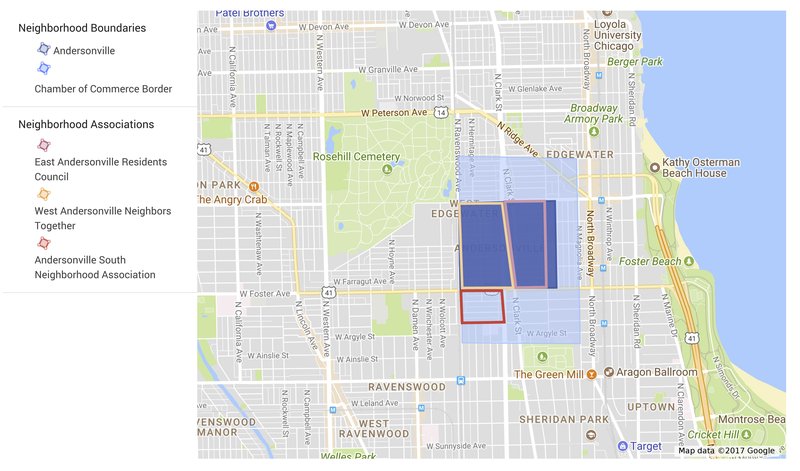
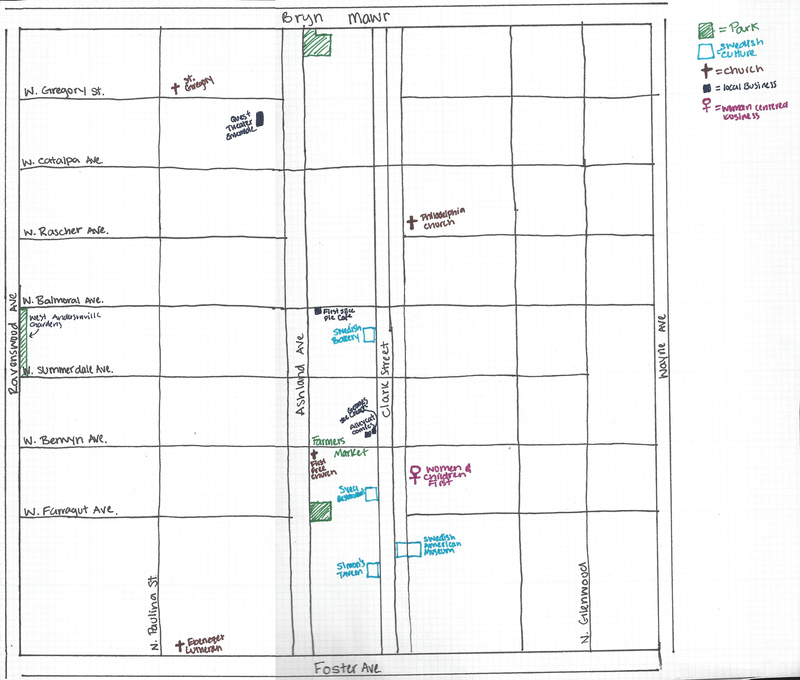

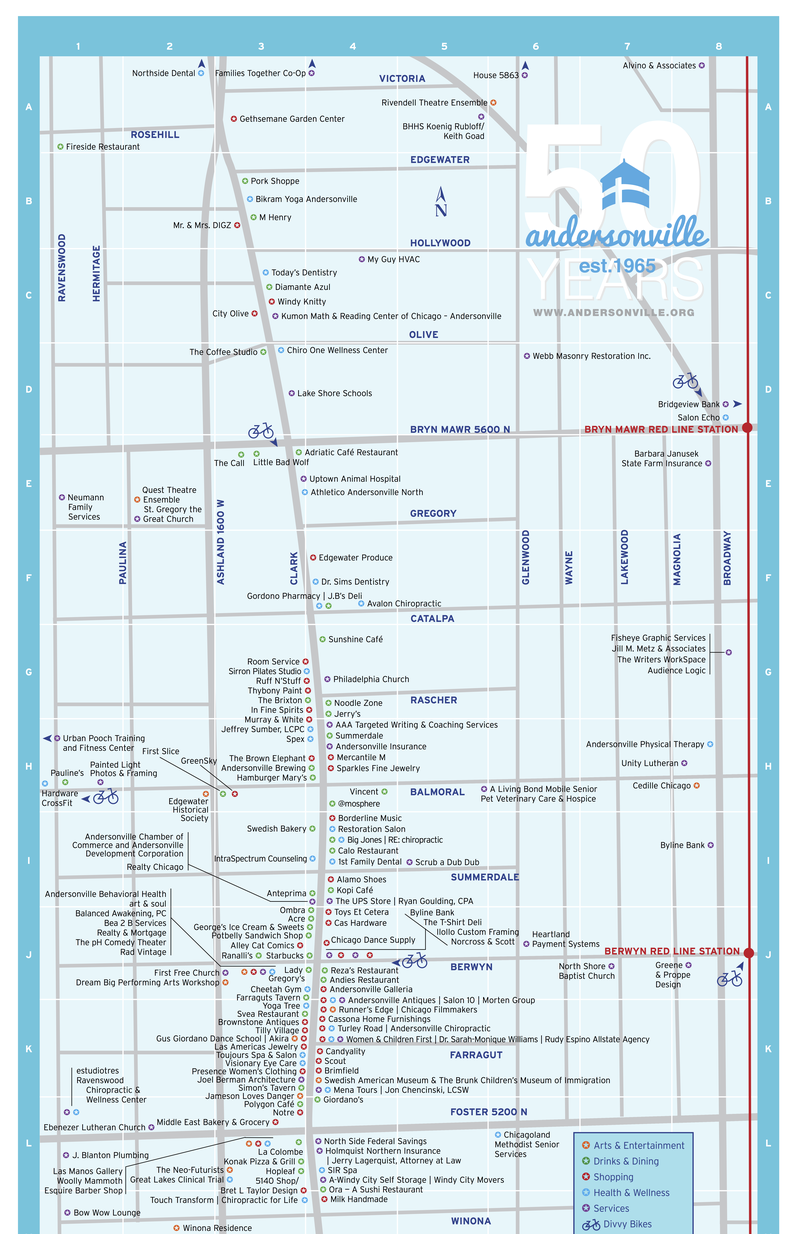
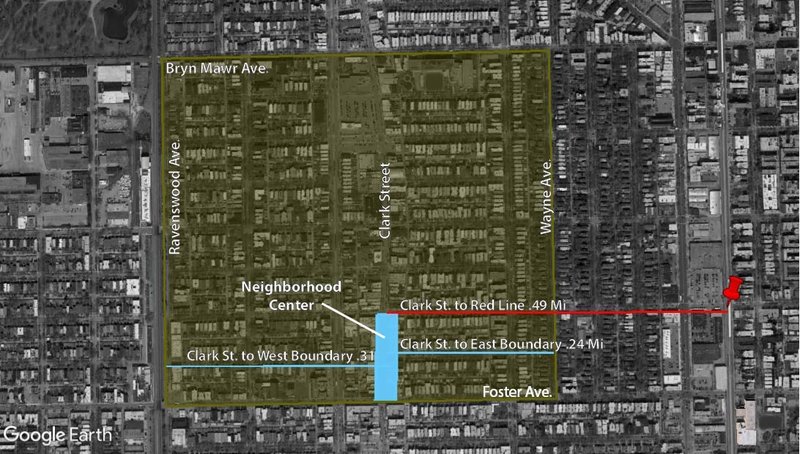
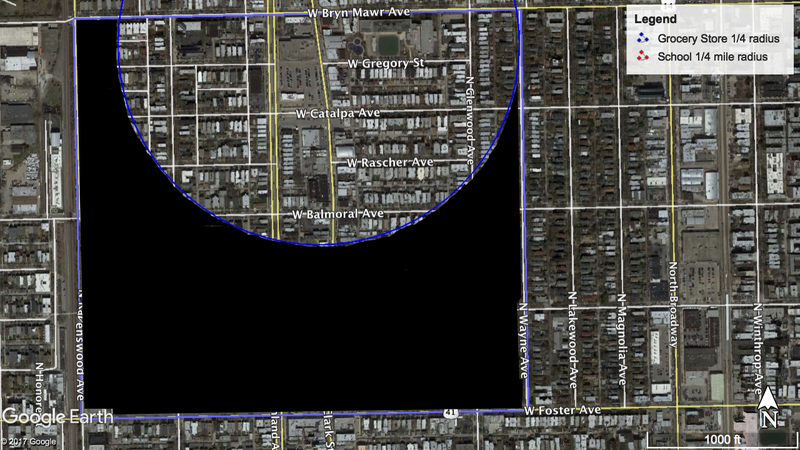
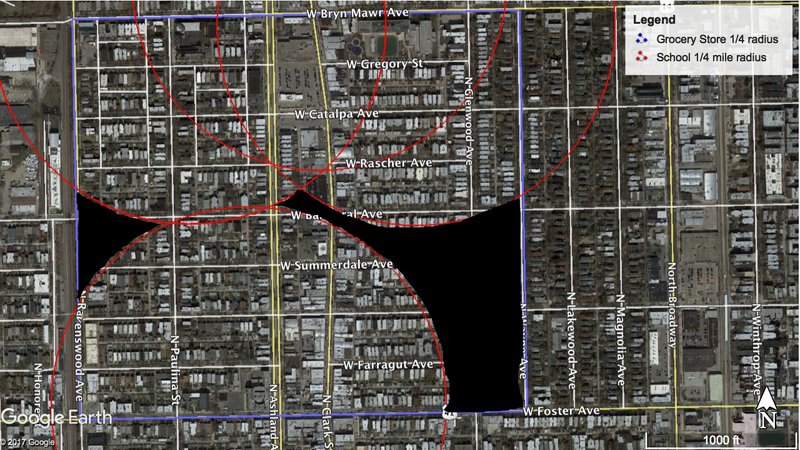
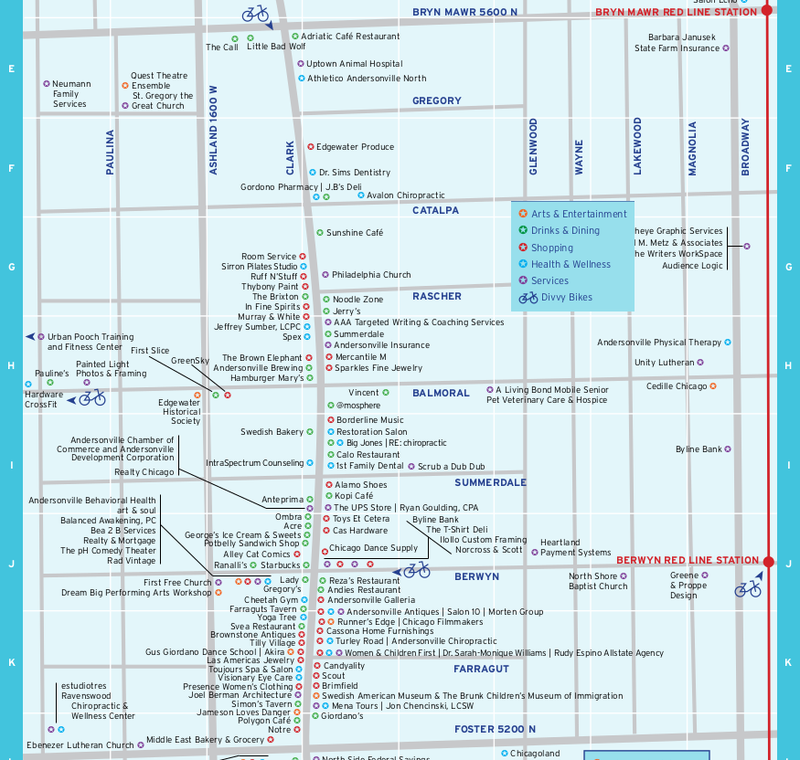
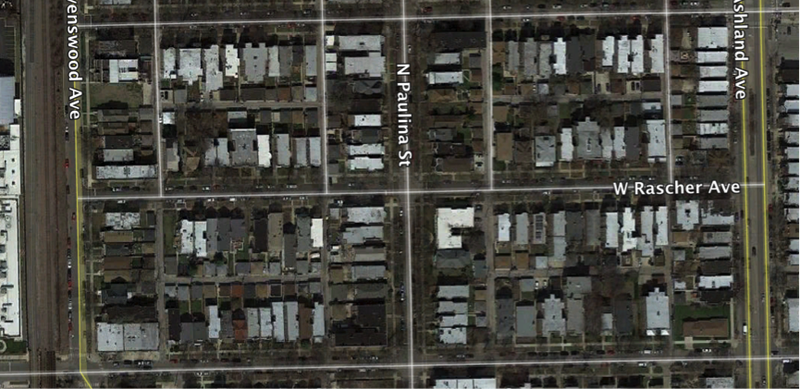
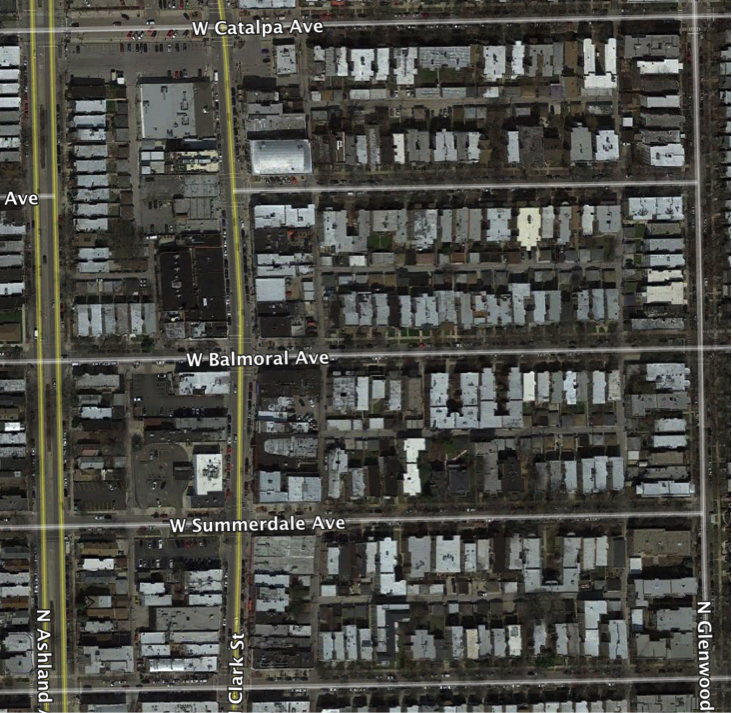
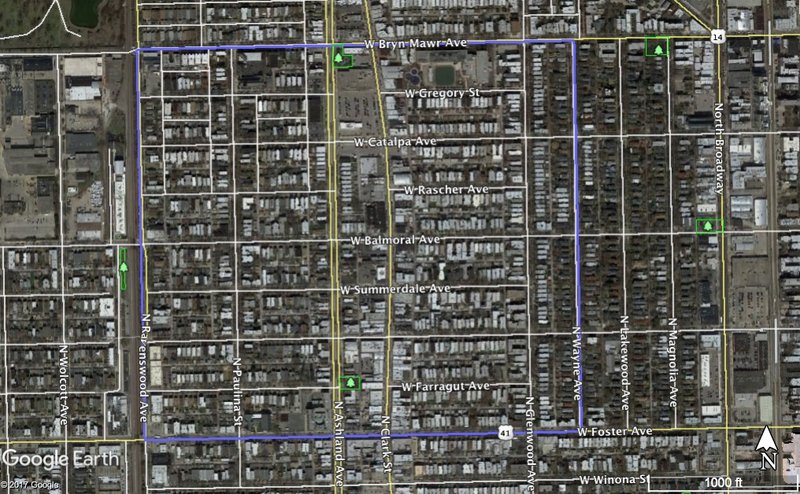
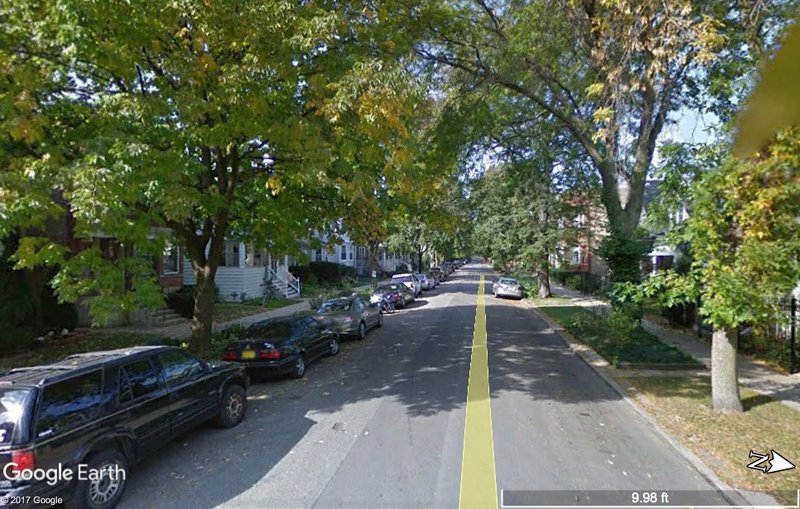
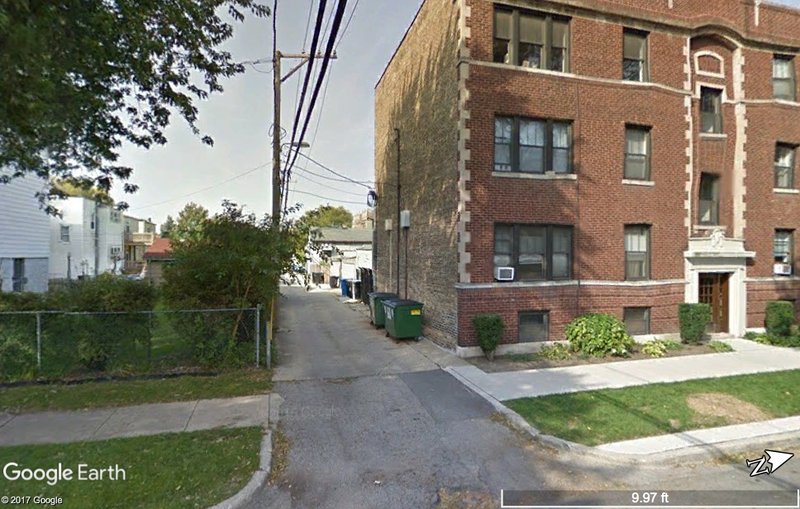
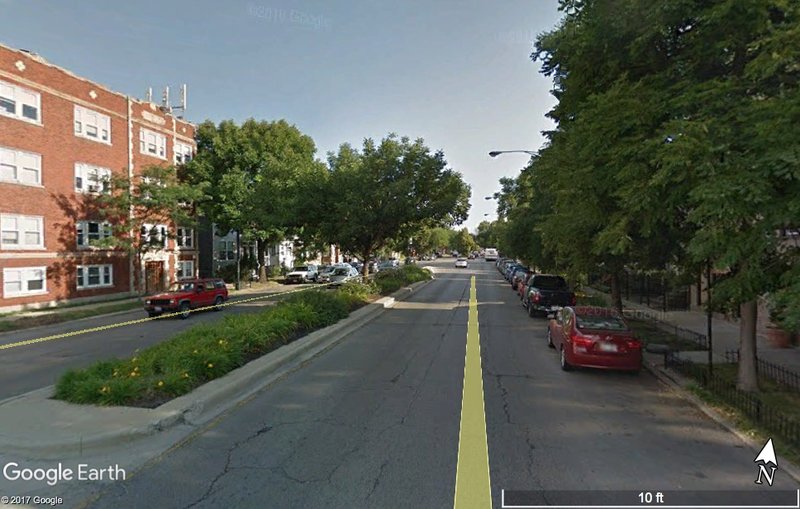
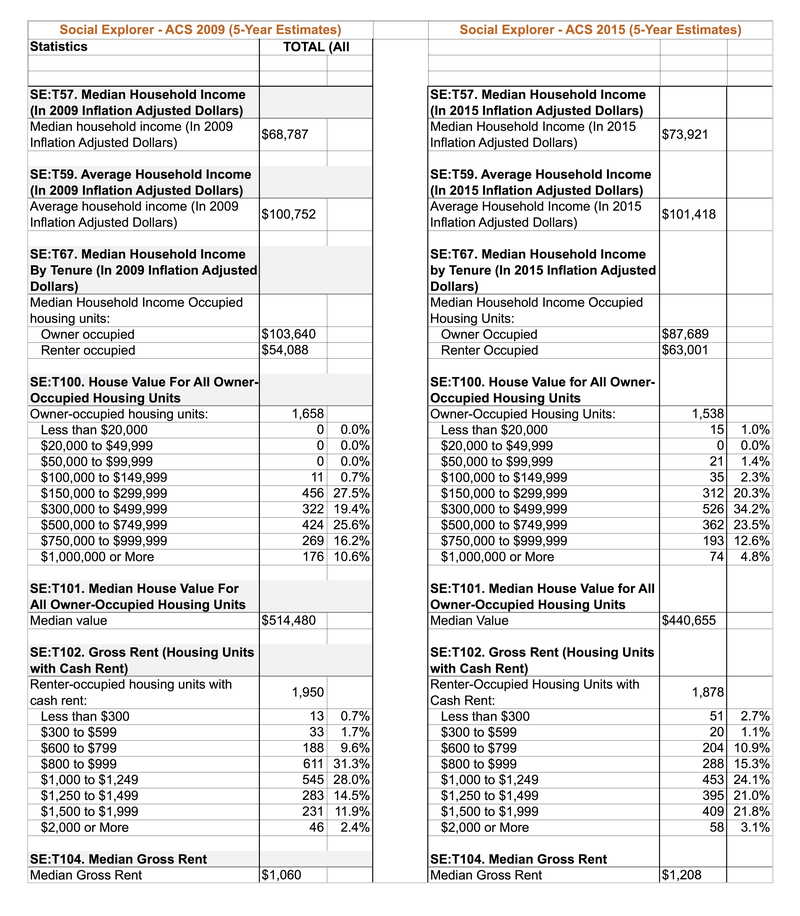
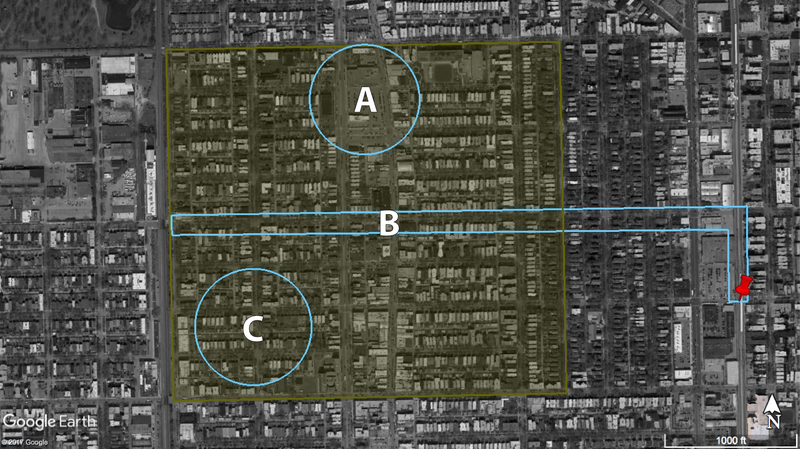
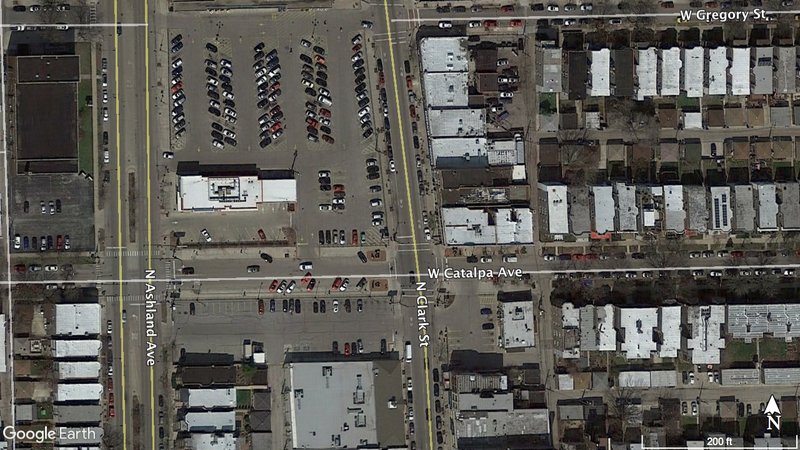
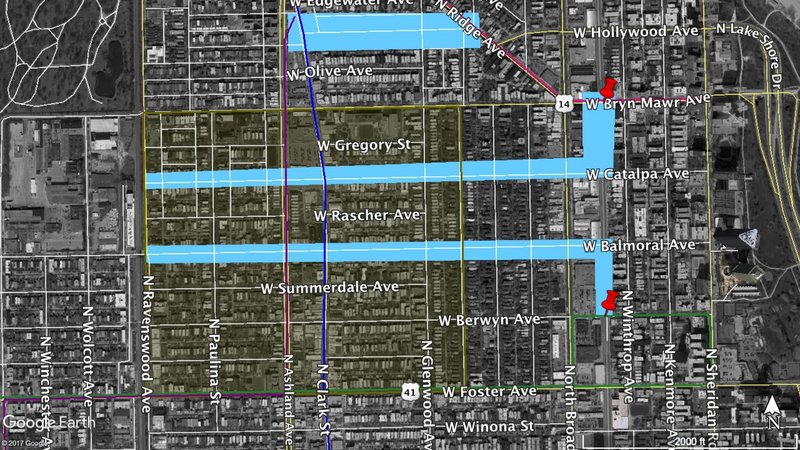
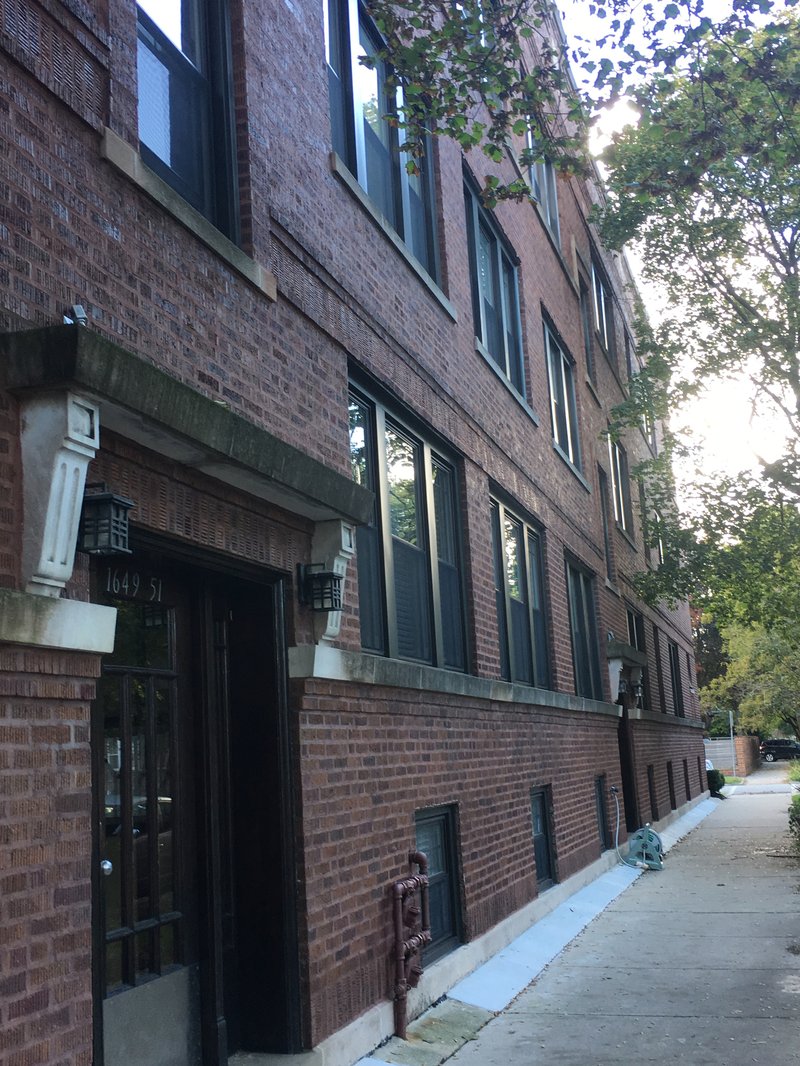
Social Mix
Using Social Explorer to analyze the American Community Survey 2015 (5-year estimates) from the US Census Bureau we are able to take a closer look at the demographics and diversity of Andersonville. In the tables below, you will find a summary of the basic demographics of Andersonville (census tracts 308 and 309, Cook County, Illinois), as well as a more in depth analysis of select characteristics of the neighborhood’s diversity utilizing the Simpson Diversity Index. The equation for the Simpson Diversity Index is [N(N-1)]/∑[n(n-1)] with N being the total population and n being the population of each category. Using this index, the highest possible value is the number of total categories and the closer the number is to the total number of categories the more diverse the area is with regards to the characteristic being analyzed.
Demography Overview
At first glance, we can note that the population of the area is 7,364 and split fairly evenly between the sexes, household type (family and nonfamily), and tenure (owner occupied and renter occupied). The vast majority of the population 25 year and older has a high school degree, 93.1%, and most have a Bachelor’s degree or more, 66%. There are very few homes in the area with a value less than $150,000 and the median value of a home in Andersonville is $440,655. For tenants, the median rent is $1,208 with very few units available for less than $600.
Diversity Tables and Analysis
Using the Simpson Diversity Index, we can take a closer look at the diversity of Age, Race, and Household Income present in Andersonville, and compare it to the larger geographic context it occupies. In the age category, Andersonville scores a 6.7 out of a possible 12. This is slightly lower than the scores of the larger Edgewater Community Area, and North Chicago Region who score at 7.5 and 7, respectively, and more significantly lower than the city at large which scores an 8.9. While it is less diverse than the city at large, and has relatively fewer older residents, considering that it is highly unlikely to have an even distribution in terms of age given that the distribution of ages of people currently alive, the neighborhood is still fairly diverse in terms of age. And, in fact, the neighborhood is likely to become more diverse in the coming years given that the “under 5 years” category was the largest category of minors.
In the category of race, on the other hand, Andersonville scores fairly low with a 2.4 out of a possible 7 with 61.1% of the population falling into the “White Alone” category. This makes sense given the neighborhood’s roots as a Swedish enclave and that Chicago as a whole is known for being one of the most racially segregated cities in the US and scores only a 3.5 using the Simpson Index.
Lastly, Andersonville scores fairly well with regards to income diversity at an 11 out of a possible 16. However, this is lower than the scores of the larger Community Area, Region, and City which all score around 14. The median income in the neighborhood is $73,921, with the largest percentages of the population falling in the $60,000 - $74,999 and $75,000 – $99,000 categories indicating that while not wholly un-diverse in terms of income, the neighborhood definitely skews wealthier.
Sources
Social explorer: https://www.socialexplorer.com/tables/ACS2015_5yr/R11537676